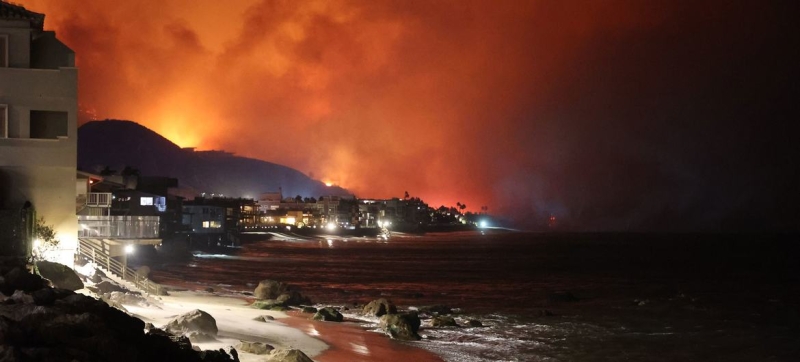
Fire in California. The concentration of carbon dioxide in the atmosphere has reached a new high. Climate and Environment
The concentration of carbon dioxide (CO₂) in the Earth’s atmosphere grew at a record pace in 2024 and reached new highs. This has intensified long-term trends in global warming and extreme weather events. This was reported by the World Meteorological Organization (WMO).
The rise in CO₂ levels has been driven by continued emissions from human activities, increased wildfires, and a decline in the ability of land and oceans to absorb carbon dioxide. The phenomenon could trigger a dangerous new climate cycle, experts warn.
Growth three times faster than the 1960s
According to the new edition of the WMO Greenhouse Gas Bulletin, the rate of increase in CO₂ concentrations is three times higher than in the 1960s: while the average annual increase was about 0.8 parts per million, it increased between 2011 and 2020. increased to 2.4 ppm per year.
The average concentration of CO₂ in the atmosphere reached 423.9 ppm – for comparison, in 2004, when the first WMO bulletin was published, this figure was 377.1 ppm shares.
About half of all CO₂ emissions remain in the atmosphere, while the rest is absorbed by land and oceans. However, this natural “storage” of carbon dioxide is weakening as the climate warms, the solubility of carbon dioxide in the oceans decreases, and droughts become more frequent.
“There are concerns that the ability of land and oceans to absorb CO₂ is declining, leading to an acceleration of global warming. Therefore, it is necessary to constantly strengthen the monitoring of greenhouse gases in order to understand how these feedbacks are formed,” noted WMO senior scientist Oksana Tarasova.
Record levels of other greenhouse gases gases
Other long-lived greenhouse gases – methane and nitrous oxide – also set new highs.
Methane levels reached 1,942 ppb shares, 166 percent above the pre-industrial level, and nitrous oxide – 338 parts per billion, which is 25 percent higher than before values.
“Heat trapped by CO₂ and other greenhouse gases is increasing the impact on our climate and leading to more extreme weather conditions. Thus, reducing emissions is important not only for our climate, but also for our economic security and the well-being of society,” emphasized WMO Deputy Secretary-General Ko Barrett.
Monitoring and Actions
The WMO report is published ahead of the United Nations Climate Change Conference (COP30), which will be held in November in Belém, Brazil. The organization calls for strengthened global monitoring of greenhouse gases to inform data-driven it was possible to take effective measures to protect the climate.
